

Part I- Basic Principles in Salt Tectonics
7- Growth Faults, Roll-overs, Grabens and Fracture Zones
Contents:
7.1- Growth Faults and Roll-overs7.2- Growth Faults and Compensatory Grabens
7.3- Growth Faults, Roll-overs and Fault Welds
7.4- Fracture Zones
7.1- Growth Faults and Roll-overs
When extension is associated with halokinesis (salt tectonics), growth faults, roll-overs, compensatory grabens and other extensional structures are quite common on the seismic lines. You are reminded of the following examples:
(i) The hade of the listric faults ;
(ii) The roll-over geometry ;
(iii) The weld formation ;
(iv) The magnitude of extension and
(v) The cartography of fault planes.
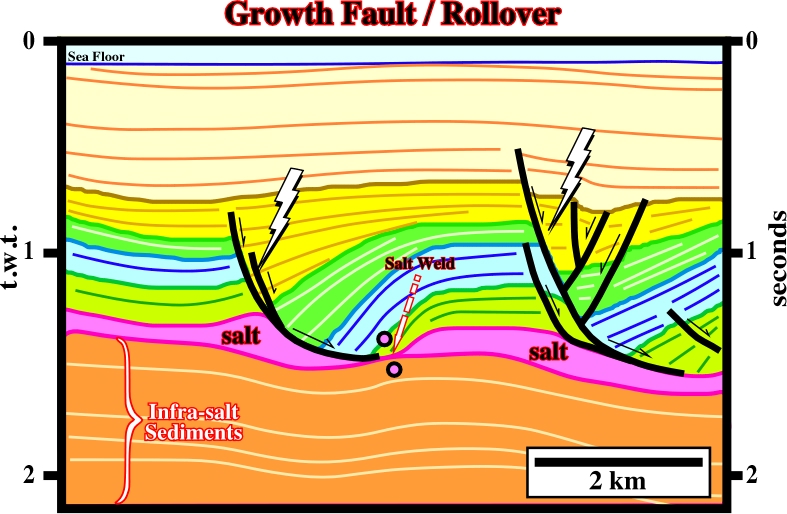
Fig. 204- On this tentative interpretation of a seismic line of the Angola offshore, the rotation of the down-thrown blocks (roll-overs), as well as, the thickening of the sedimentary packages toward the faults looking to the right (seaward) are coherent with the decreasing hade of the fault planes. Such a rotation creates a tectonic disharmony at the top of the salt (when the salt is present), which is characterized by downlap seismic surface. This geometry implies an arcuate cartography of the fault plane. A smaller fault weld can recognized at the toe of the first growth-fault. Along the other growth-fault (on the right) several accommodation faults were developed to solve the volume problem created, partially, by the extension and, partially, by the salt flowage. According to the Goguel’s law, during deformation the volume of the sediments must be constant. In spite that this law is an approximate law (lost of volume by compaction of the sediments and salt dissolution), it can be considered as an application to Geology of the first law of thermodynamics or law of conservation of energy. The pull-ups and pull-downs at the top of the infra-salt strata emphasize lateral velocity variations on the cover (salt + overburden).
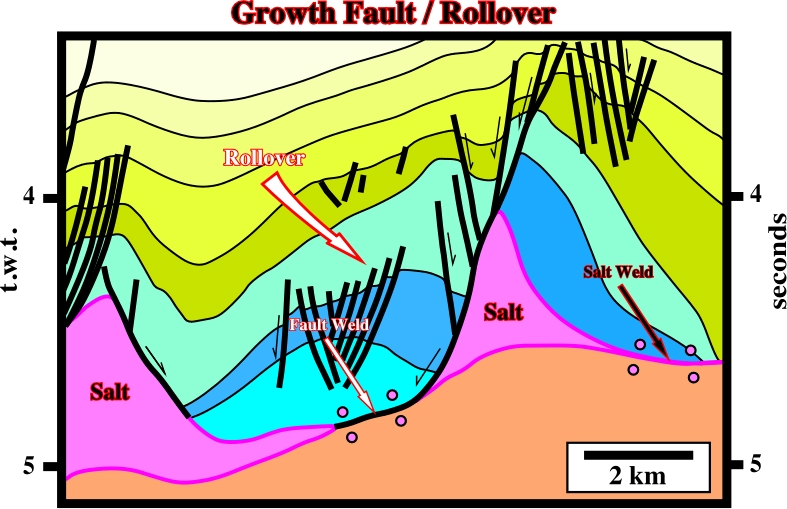
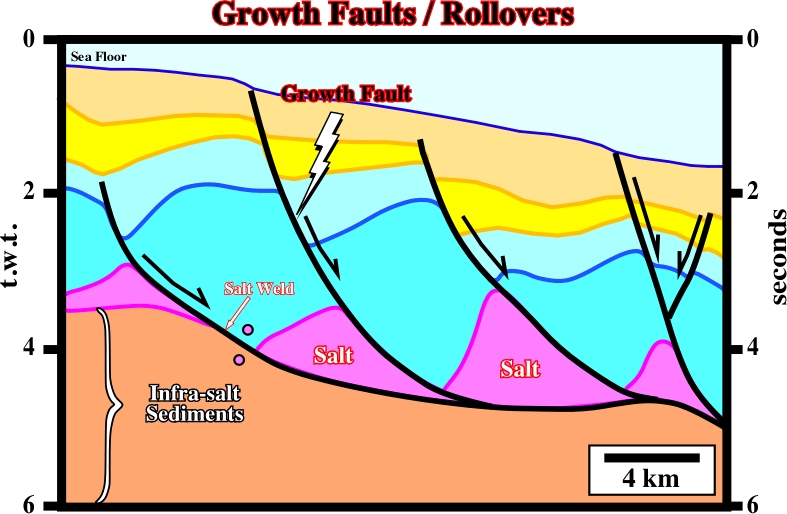
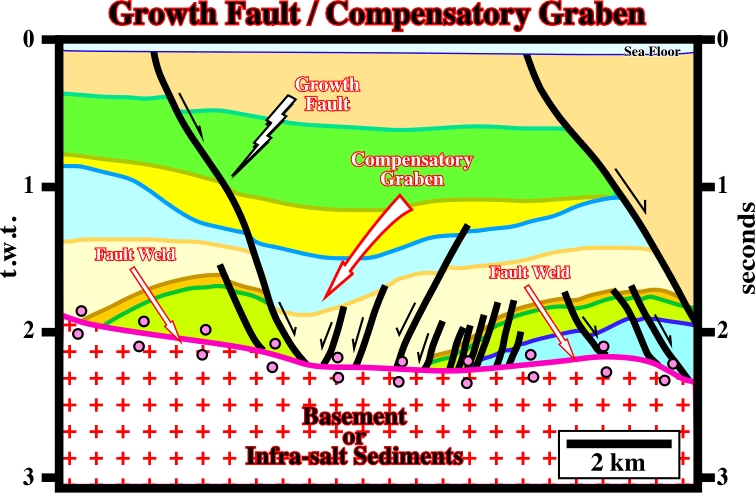
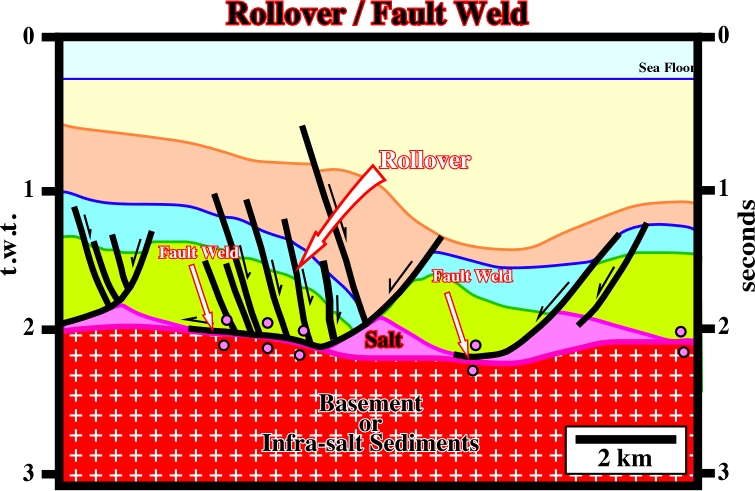
Fracture zones are zones of fragility of the continental crust of the super-continents, which can favour the breakup of the lithosphere. In offshore, and particularly in Atlantic-type divergent margins, old fracture zones are, often, remobilized directly or indirectly, in associated with transform faults and changes in the rate of sea floor spreading. South Atlantic major fracture zones are well known not only nearby the Mid-Atlantic ridge, but below the margin sediments as well (fig. 209 to fig. 212).
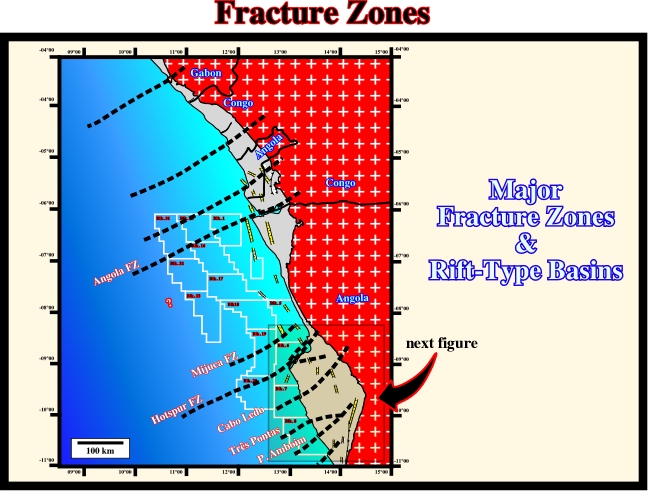

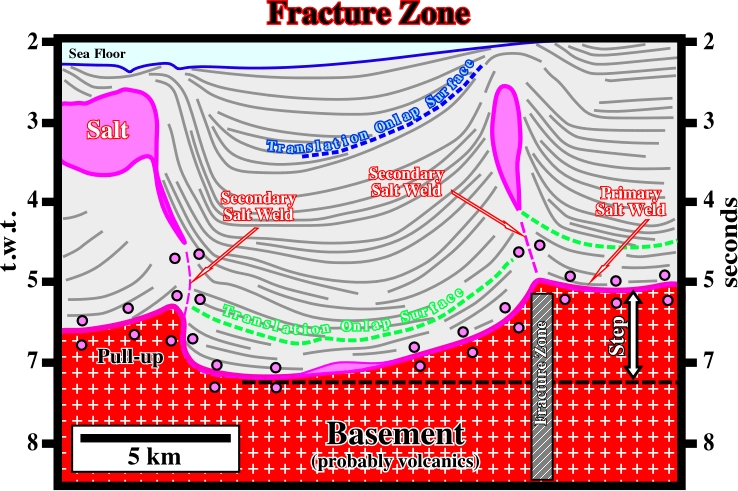
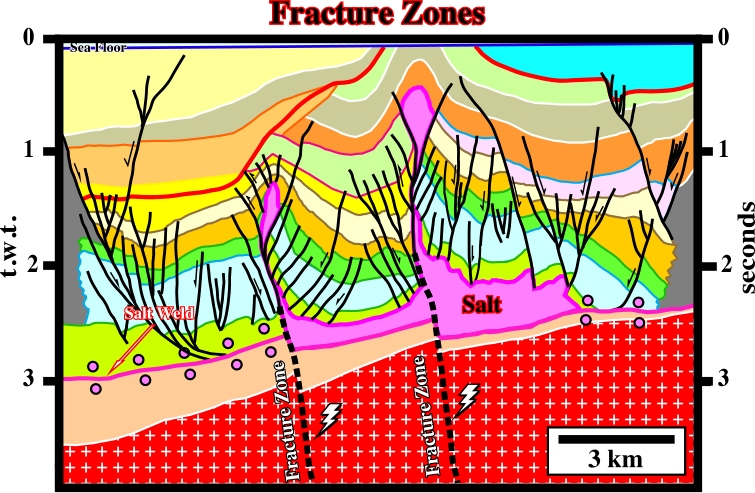
to continue press
next